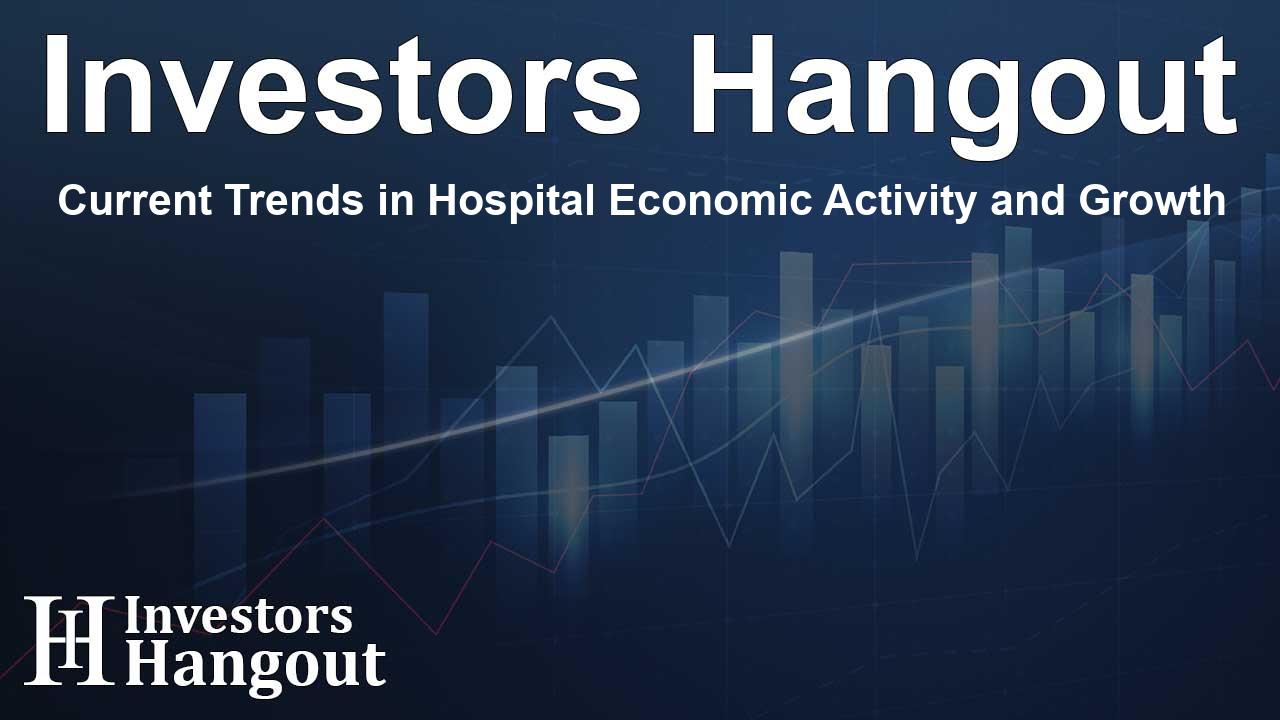Current Trends in Hospital Economic Activity and Growth

Understanding Hospital Economic Activity in Recent Months
The Hospital Purchasing Managers’ Index (PMI) reflects a significant evolution in the hospital sub-sector, showing continuous growth patterns. In September, the Hospital PMI was recorded at 55%, marking a modest decrease from 58.6% in August. Despite the slight downturn, this figure indicates the 13th consecutive month of growth for the hospital industry, rebounding from a contraction that occurred earlier.
Key Indicators of Hospital Performance
The September report, presented by industry experts, detailed several key indices: the Business Activity Index and New Orders Index both continued their expansion, suggesting that hospitals are experiencing increased operational volume and new contractual agreements. The Employment Index remained steady in expansion territory, reflecting ongoing efforts to fill staffing gaps. However, the Supplier Deliveries Index, which gauges the timeliness of supply chain operations, indicated that slower delivery times have persisted for the 13th consecutive month.
Analysis of Specific Index Movements
Notably, the Case Mix Index experienced a contraction, dropping to 48.5% after four months of expansion, signaling potential shifts in the patient demographic or treatment types being prioritized. Conversely, the Days Payable Outstanding Index saw an upward movement, reflecting hospitals’ efforts to manage cash flow amidst fluctuating supplies and demand. More encouragingly, Technology Spend Index figures suggested a continued investment in health technologies, which is essential for patient care and operational efficiency.
Challenges and Opportunities Ahead
While the overall sentiment remains positive, various challenges have been reported. Many facilities are currently experiencing back orders and congestion within supply chains as seasonal vaccines and medications become available. This supply chain complexity has led some hospitals to reevaluate their staffing strategies, seeking to reduce reliance on temporary labor by filling permanent positions.
Future Outlook and Strategic Adjustments
As the healthcare sector approaches the end of the year, anecdotes from hospital administrators suggest a consistent increase in patient volumes, a typical expectation for this time. The ongoing expansion of facilities to accommodate growth, both for inpatient and outpatient care, highlights a proactive approach to addressing anticipated healthcare needs.
Conclusion: Navigating Change in Healthcare
In summary, while the Hospital PMI is indicative of ongoing growth, it is crucial for healthcare organizations to adapt strategically. The health sector is transforming rapidly as it encounters increased demand and evolving patient needs. By focusing on innovative service delivery and efficient supply chain management, hospitals can navigate the challenges ahead while continuing to thrive.
Frequently Asked Questions
What is the Hospital PMI?
The Hospital Purchasing Managers’ Index (PMI) measures the economic activity in the hospital sector, reflecting trends in business activity and operational performance.
How does a PMI reading above 50% affect hospitals?
A PMI reading above 50% indicates that the hospital sector is expanding, whereas a reading below that threshold would suggest a contraction in activity.
What challenges are hospitals facing currently?
Hospitals are facing supply chain congestion, increased back orders, and staffing challenges, which could impact their operational efficiency.
What trends are driving changes in the hospital sector?
Trends include increased patient volumes during certain seasons, the need for technological investments, and a shift toward filling permanent staffing positions over temporary roles.
What can hospitals do to prepare for the future?
Hospitals can prepare by focusing on efficient resource management, expanding facilities to meet demand, and continuing to enhance technology use for better patient care.
About Investors Hangout
Investors Hangout is a leading online stock forum for financial discussion and learning, offering a wide range of free tools and resources. It draws in traders of all levels, who exchange market knowledge, investigate trading tactics, and keep an eye on industry developments in real time. Featuring financial articles, stock message boards, quotes, charts, company profiles, and live news updates. Through cooperative learning and a wealth of informational resources, it helps users from novices creating their first portfolios to experts honing their techniques. Join Investors Hangout today: https://investorshangout.com/
Disclaimer: The content of this article is solely for general informational purposes only; it does not represent legal, financial, or investment advice. Investors Hangout does not offer financial advice; the author is not a licensed financial advisor. Consult a qualified advisor before making any financial or investment decisions based on this article. The author's interpretation of publicly available data shapes the opinions presented here; as a result, they should not be taken as advice to purchase, sell, or hold any securities mentioned or any other investments. The author does not guarantee the accuracy, completeness, or timeliness of any material, providing it "as is." Information and market conditions may change; past performance is not indicative of future outcomes. If any of the material offered here is inaccurate, please contact us for corrections.